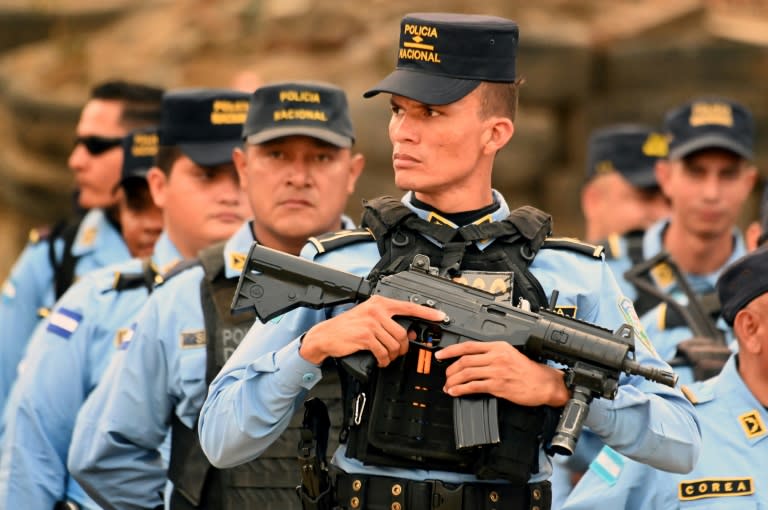Honduran mother seeks closure as gang burial site uncovered

Maria was 13 when Honduran gangsters raped her and forcibly recruited her, ripping her from her home.
Three years later, her mother is anxiously waiting to find out if her daughter's remains are among those found in one of the mass graves uncovered in the north of the country last month.
"Finding my daughter's bones is the only thing I want" to find peace, said Nolvia, who out of fear uses a pseudonym for both herself and her daughter.
Maria's fate is no mystery.
About a year ago, Nolvia received a Facebook message telling her to stop looking for her daughter as she would never find her.
"They told me that they had killed her with a shot to the head and that she was in that clandestine graveyard," she told AFP.
Authorities started digging in late May on the side of a hill located on the outskirts of the city of San Pedro Sula, some 180 kilometers (111 miles) from the capital Tegucigalpa.
So far, they have uncovered the remains of 13 people. Several such graves have been discovered nearby.
Honduras, much like its neighbors Guatemala and El Salvador, has been brought to its knees by gang violence.
Last year, Honduras recorded a rate of 34 homicides per 100,000 inhabitants -- six times the global average.
President Xiomara Castro's government imposed a state of emergency in December 2022, trying to emulate her gang-busting counterpart Nayib Bukele in El Salvador, but the brutality continues.
- 'It cannot be' -
Nolvia told AFP her daughter was in her first year of high school when she was raped and forced into a gang in Lomas del Carmen, a poor neighborhood in San Pedro Sula.
"She dropped out of school. They took her to live with them," she said.
"It cannot be that they are grabbing girls and putting them into these gangs. They are children, they have to study, they have a whole life ahead of them."
Since the news of the mass graves emerged, Nolvia and others have been waiting at a forensic institute in San Pedro Sula for news of missing relatives.
Nolvia believes Maria is buried there because she heard on the news that an exhumed skull had a bullet hole in it.
"They all have a shot to the head," said coroner Vladimir Nunez, warning that DNA analysis would have to be carried out to identify the victims.
Police were alerted to the existence of the mass graves by residents of Lomas del Carmen, which lies next to the hillside.
Nolvia said some neighbors had seen her daughter being taken to the hillside to be killed.
One such resident, Juan, 72, told AFP he had on many occasions seen gang members taking the dead to be buried there. He estimates about 40 victims are in the mass graves.
- 'Crazy houses' -
Authorities believe many of the remains belong to residents who refused to hand over their homes to gangs.
Forcing people out of their homes is a common tactic used by Honduran gangs, who use the so-called "casas locas" (crazy houses) for murder, torture and other nefarious activities.
Juan -- who did not want to give his last name -- said there are "a lot of empty houses and vacant lots" in the neighborhood.
Nolvia was also forced to flee.
"They were going to kill me. They came with guns and said: 'You have a few hours to get out'," she said.
"There are many cases like this, but people are afraid to speak up."
Nolvia took the warning seriously, and went to live with her sister.
She hopes that leaving the neighborhood will save her 11-year-old daughter from the fate that befell her sister.
nl/mis/fb/mlr/mdl


